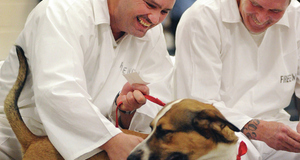Voice Therapy: A Safe and Effective Alternative to Voice Surgery
By
2012, Vol. 4 No. 08 | pg. 1/2 | »
KEYWORDS:
The voice is perhaps one of the most important functions of the human body, as it permits individuals to speak their thoughts and opinions and communicate with others. Misuse of the voice, however, can lead to devastating effects, including hoarseness, laryngitis, and in extreme cases, vocal paralysis. To prevent these effects, there are a variety of therapeutic techniques that can ease pressure in the larynx to preserve a clear and healthy voice. It is a common impulse to choose voice surgery over therapy to quickly and easily cure a voice disorder, but the process of voice therapy has proven to be more effective over time. Voice therapy is a safer and more effective alternative to voice surgery because it teaches those with voice disorders beneficial voice habits, guarantees a stronger voice for a longer period of time, and reduces the risk of voice disorders in the future. The process of voice therapy provides a variety of therapeutic techniques that can teach individuals to develop voice habits that will preserve a resonant and healthy voice. These techniques may include vocal hygiene and voice conservation, hydration, yawn sigh, and voice relaxation to wear away any defects in the larynx that may be causing a voice disorder. Voice therapy also sets certain guidelines, such as to avoid screaming, yelling, and speaking in loud environments, limit telephone use, and to avoid throat clearing and coughing, as they cause trauma to the vocal cords. Voice therapy also encourages other specific guidelines, such as no smoking, as it causes the most damage to the vocal cords, to limit the use of air conditioning in the summer, and to place a cold-air steam humidifier in the winter at night to prevent dryness of the throat. To practice voice rest and relaxation, an individual should rest his or her voice for at least five minutes every few hours, send an e-mail or text message instead of calling, and plan for times of heavy voice use by resting the voice before and after (Theiss, 2010). At a typical visit with a voice therapist, he or she will evaluate the individual on his or her voice quality, and develop a system of techniques that will enhance his or her voice quality as the process of voice therapy continues. These techniques include many that were stated in above, but also vary depending on the person. If an individual adheres to these techniques and guidelines throughout the process of voice therapy, he or she can essentially cure a voice disorder. The techniques and guidelines, if practiced regularly, will eventually turn into beneficial voice habits that will help to preserve a healthy voice for those in the process of receiving voice therapy, as opposed to voice surgery, where little techniques and guidelines are enforced during rehabilitation.The purpose of voice therapy is not only to provide therapeutic techniques to cure a voice disorder, but to also encourage beneficial voice habits to ensure a healthy quality of voice. The therapeutic techniques that are enforced in voice therapy are meant to be easy, quick, and effective in the healing of a voice disorder. Dayasiri Kavinda (2011), a speech therapist in the department of Otolaryngology at the National Hospital of Sri Lanka, stated, “A main goal of the treatment techniques is to reduce muscle tension and hyper function and optimize vocal behavior to reduce the trauma to the vocal folds, so that the aerodynamic forces and acoustic properties approach normal values” (p. 359). In her study, Kavinda examined sixty women who were diagnosed with bilateral vocal cord nodules and cured their disorders through voice therapy. Kavinda provided a concrete definition for the purpose of voice therapy, as it is to use therapeutic techniques to cure a voice disorder and to preserve the quality of voice. The techniques utilized in voice therapy are meant to have a profound effect on improving the quality of voice through easing pressure in the larynx to essentially cure a voice disorder and promote healthy voice habits, whereas the purpose of voice surgery is solely to cure the voice disorder. While learning therapeutic techniques to preserve the quality of voice during voice therapy, it is important to pay close attention to the effectiveness of voice therapy as the process progresses. Throughout the process of voice therapy, an individual must pay frequent visits to his or her otolaryngologist to observe the progress that voice therapy is having on the larynx. R.J. Baken (2000), the director of Laryngological and Speech Research at the New York Eye and Ear Infirmary, discussed otolaryngologist visits throughout voice therapy by stating, “The need for careful observation and documentation by the voice rehabilitation specialist has been strengthened as our understanding of the relationship between vocal fold action and the final acoustic product has improved” (p. 394). In this article, Baken suggested the need for close observation of the larynx during the rehabilitation stage of voice disorders. The progress indicated by voice therapists through observation will enhance otolaryngologists’ knowledge on the effectiveness of voice therapy, and also promote specific therapeutic techniques that are effective in preserving the quality of voice, as opposed to voice surgery, where there is no record of gradual improvement in voice quality and little therapeutic techniques are enforced. While keeping track of the progress of voice therapy, it is important to indicate which specific therapeutic techniques are successful in healing a voice disorder and which techniques are not. Through observation during the process of voice therapy, otolaryngologists can conclude which specific techniques have an effect on the quality of voice. E. Niebudek-Bogusz (2011), an otolaryngologist in the Department of Audiology and Phoniatrics at the Nofer Institute of Occupational Medicine in Lodz, Poland, stated “The outcomes of vocal training, such as a subjective improvement of voice quality and an increase in the quantitative parameters (prolonged maximum phonation time, extended voice range) seem to be important parameters for monitoring the effectiveness of training in correct voice emission” (p. 137). In his study, Niebudek-Bogusz examined a group of teachers who received and benefited from voice therapy after being diagnosed with dysphonia, a disorder that causes frequent hoarseness. Niebudek-Bogusz believes that voice therapy is vital to improve the quality of voice. The progress that is made throughout the process of voice therapy teaches which specific therapeutic techniques have a positive effect on improving the quality of voice, versus voice surgery, where there is no gradual progress during rehabilitation to keep track of. In order to further observe which therapeutic techniques are effective in the process of voice therapy and which are not, it is important that the individual who is receiving voice therapy also keeps track of his or her progress. The person who is receiving voice therapy may notice that it is getting easier to speak and no longer has to physically force his or her voice to produce sound, which is an indicator that the process of voice therapy is effective in the healing of a voice disorder. Kenneth MacKenzie (2001), a consultant otolaryngologist for the treatment of dysphonia, stated “Voice therapy is effective in improving voice quality as assessed by self-rated and observer rated methods” (p. 659). In this article, MacKenzie concretely stated how voice therapy is effective in the treatment of dysphonia, as it eases the pressure in the larynx to decrease hoarseness and essentially cure the disorder. As the progress of voice therapy is monitored through self-rated and observer rated methods, certain therapeutic techniques are regarded to preserve a strong and healthy voice if practiced often throughout an individual’s life. Although voice surgery is considered to be a quick and easy method to cure a voice disorder, the process of voice therapy is proven to guarantee a stronger voice for a longer period of time. It is very easy to fall back into damaging voice habits after receiving voice surgery, because no therapeutic techniques or habits are enforced, which may cause a reoccurring and expensive cycle of voice operations throughout an individual’s life. The process of voice therapy, however, requires the practice of therapeutic techniques in order to preserve and maintain the quality of voice. Moya Andrews (1999), a voice therapist in the Speech and Hearing Center at Indiana University, stated, “Symptomatic voice therapy aims at substituting or shaping more appropriate behaviors to maintain long-term vocal health” (p. 238). The appropriate behaviors that Andrews meant in her work include conservation of voice, vocal hygiene, and voice relaxation to maintain a healthy voice. Andrews also indicated that voice therapy must be taken seriously in order to reveal successful results. She believes that if an individual is diligent and perseveres in the process of voice therapy, it will be easy to preserve a strong and healthy voice for the rest of his or her life.Continued on Next Page » Suggested Reading from Inquiries Journal
Inquiries Journal provides undergraduate and graduate students around the world a platform for the wide dissemination of academic work over a range of core disciplines. Representing the work of students from hundreds of institutions around the globe, Inquiries Journal's large database of academic articles is completely free. Learn more | Blog | Submit Latest in Health Science |
















